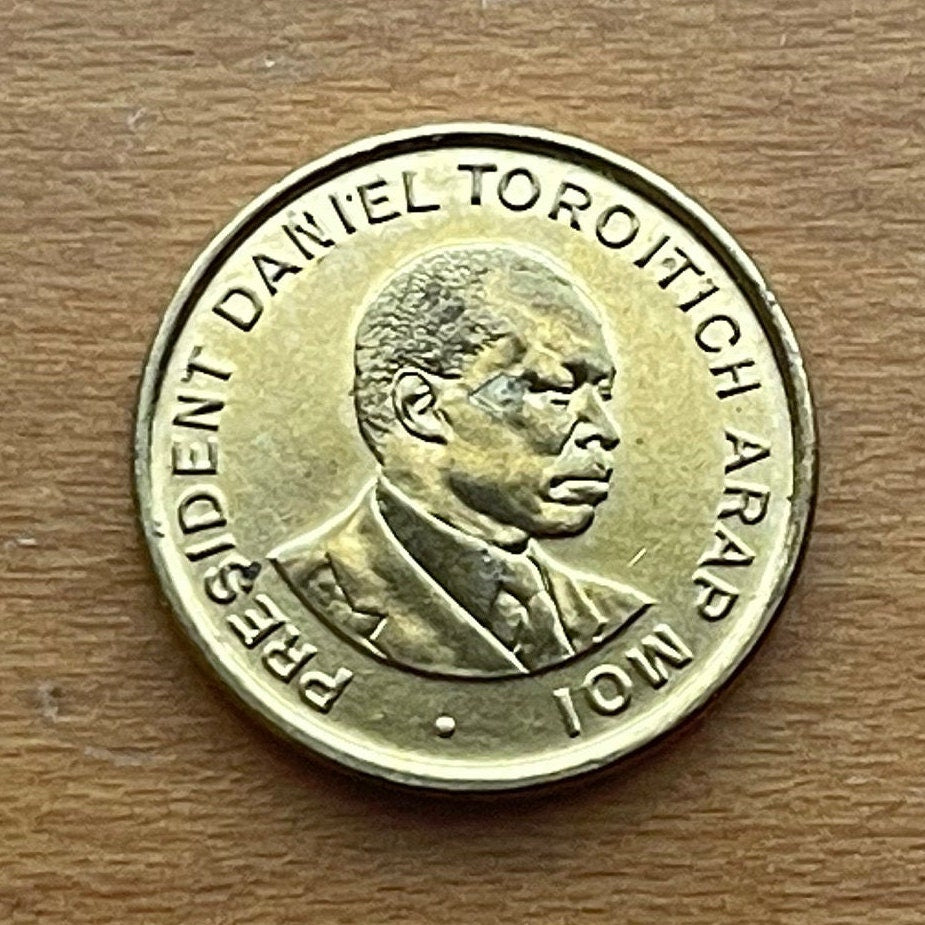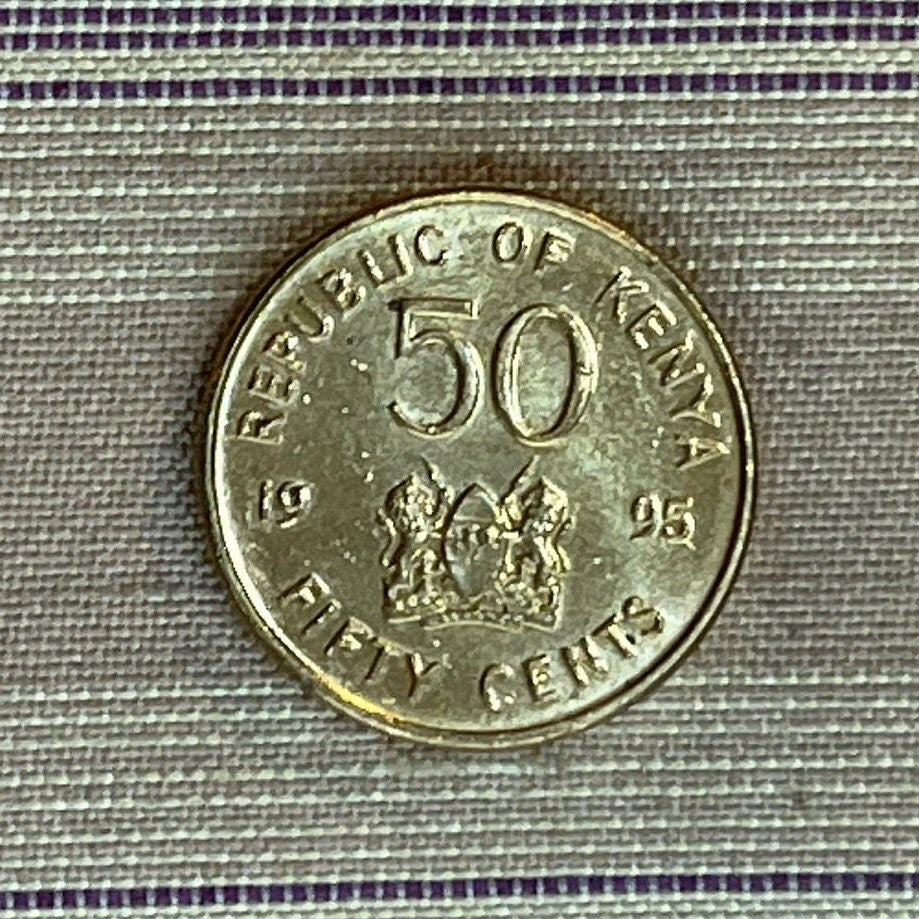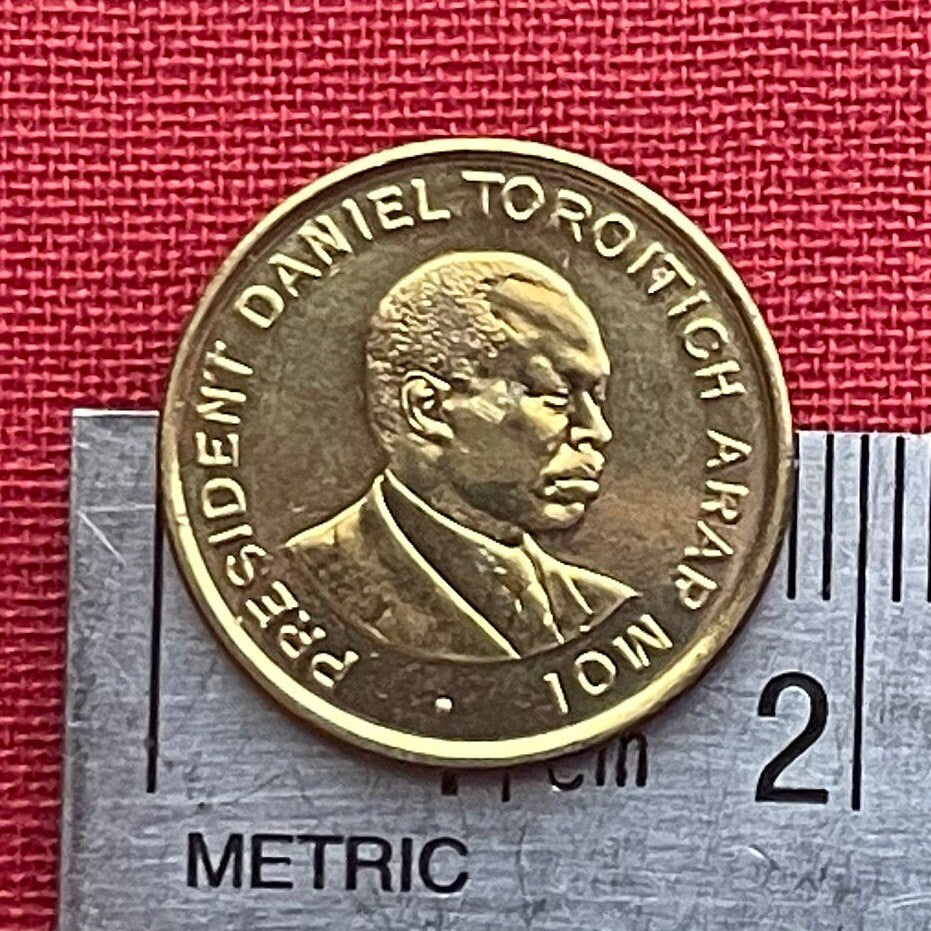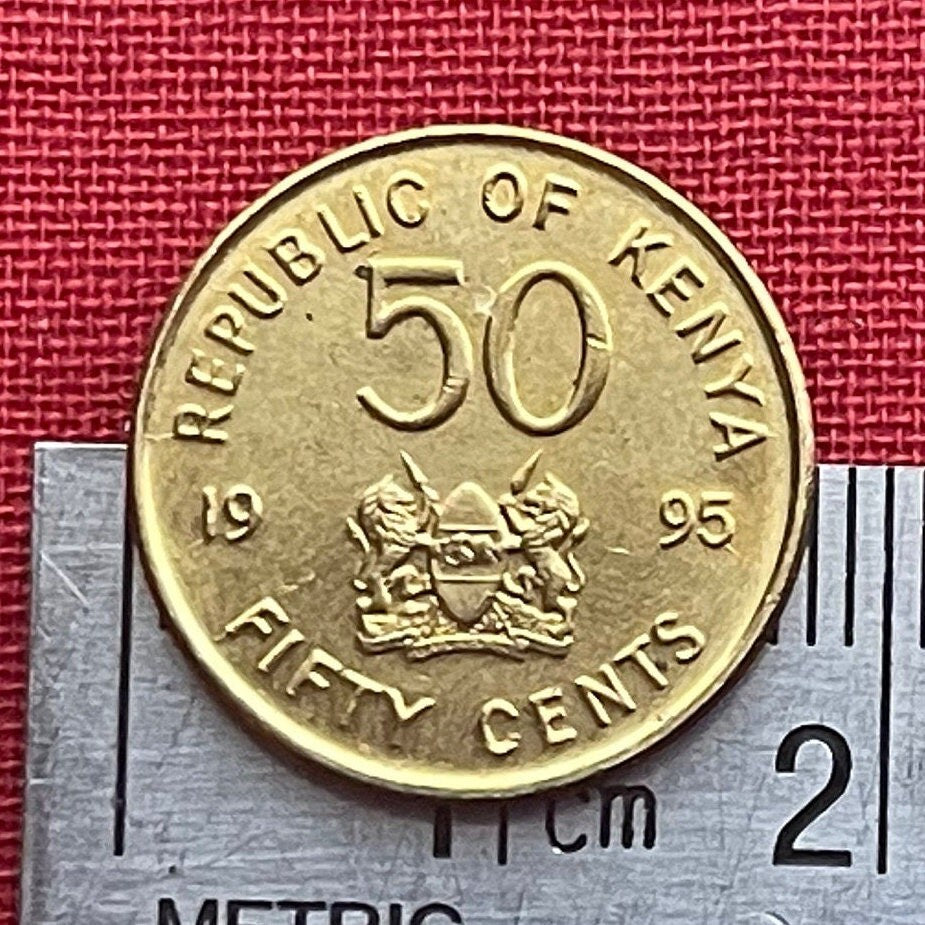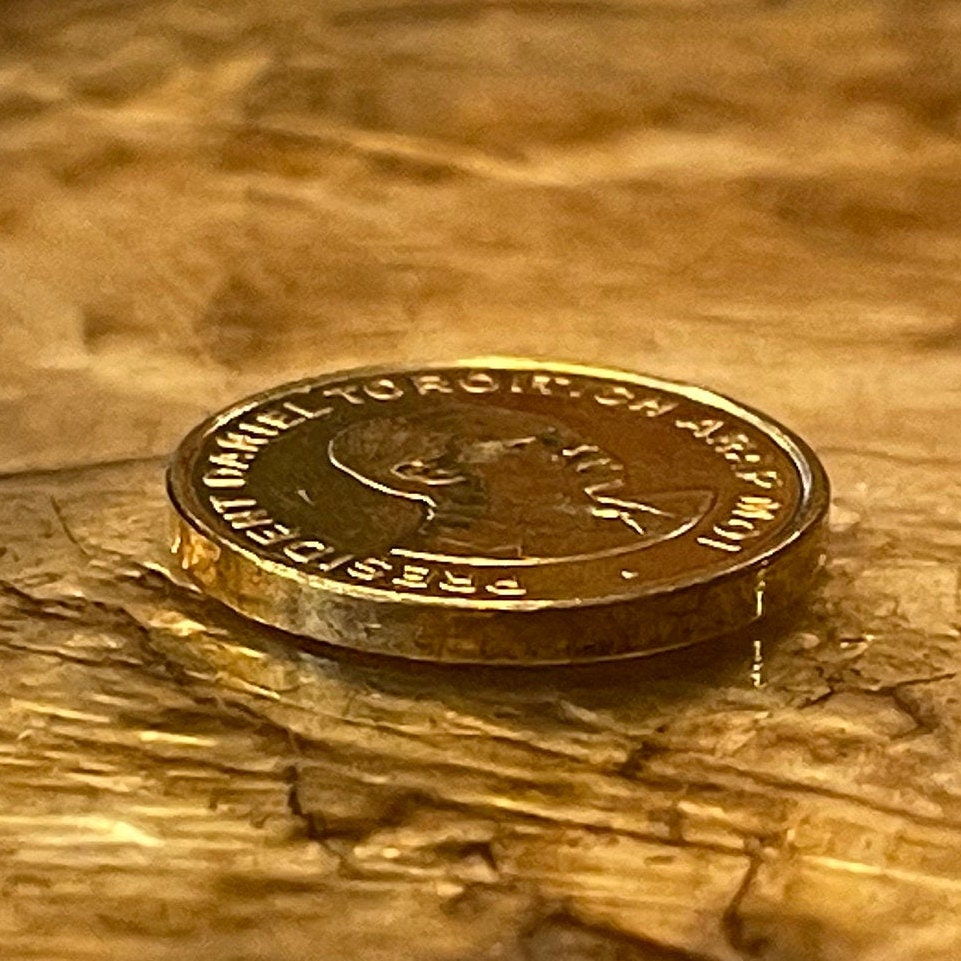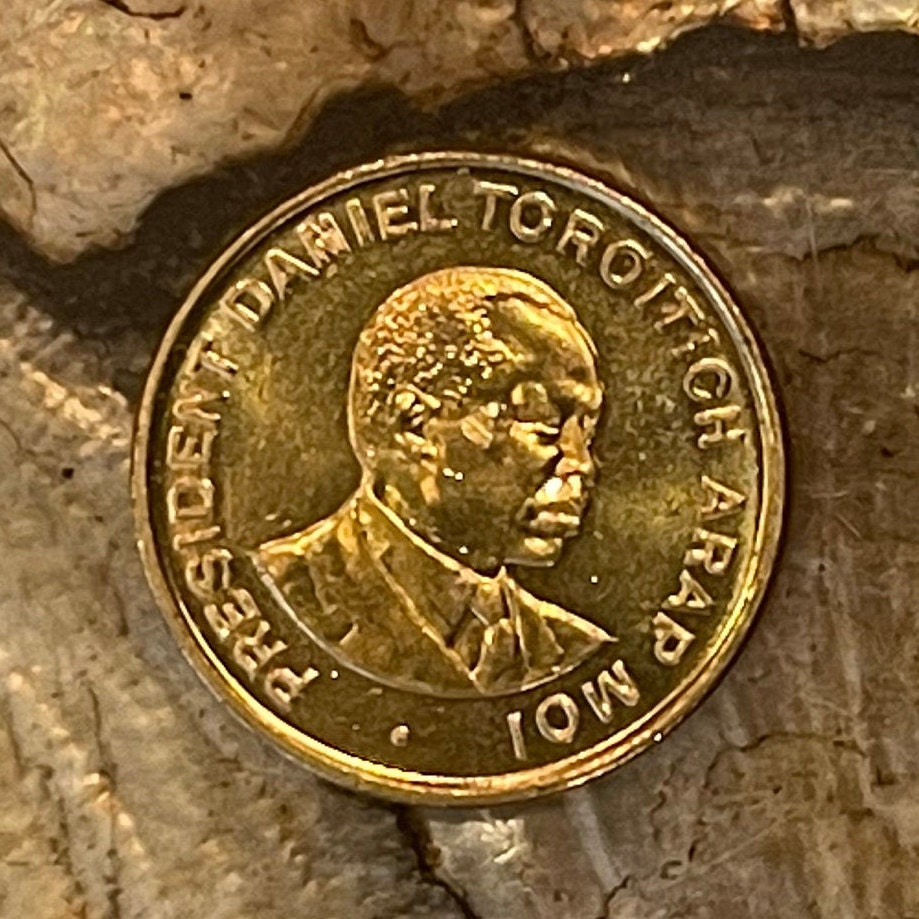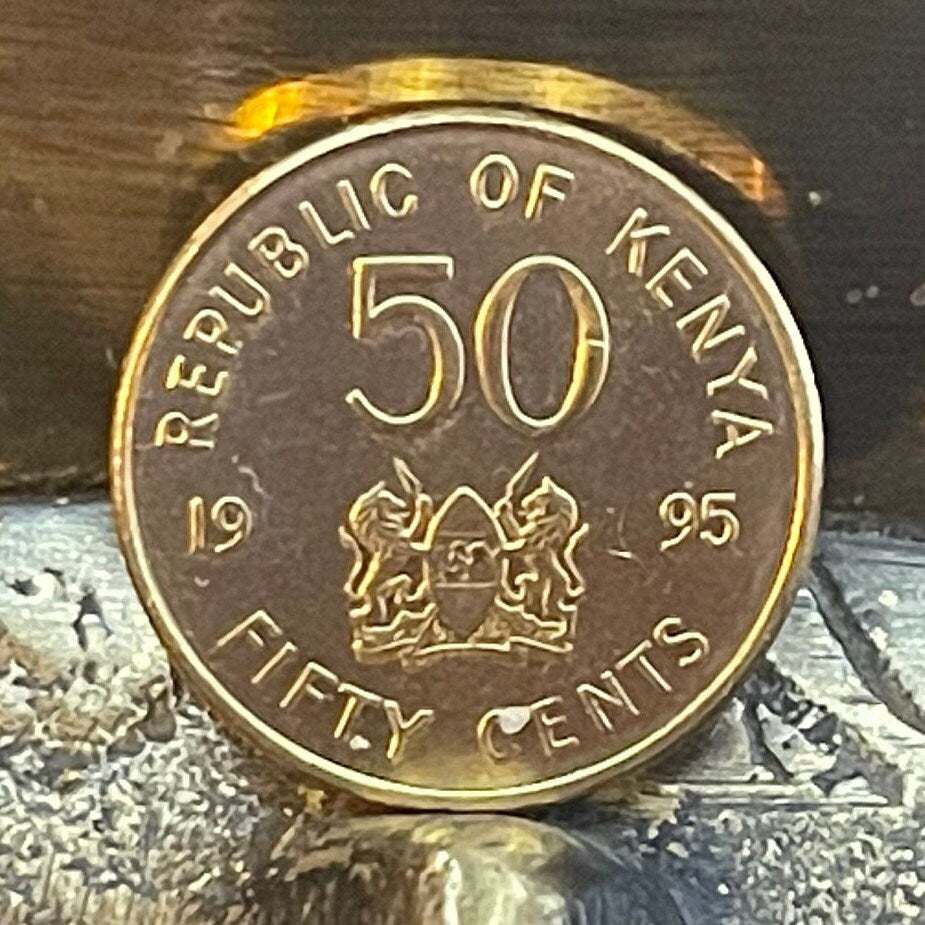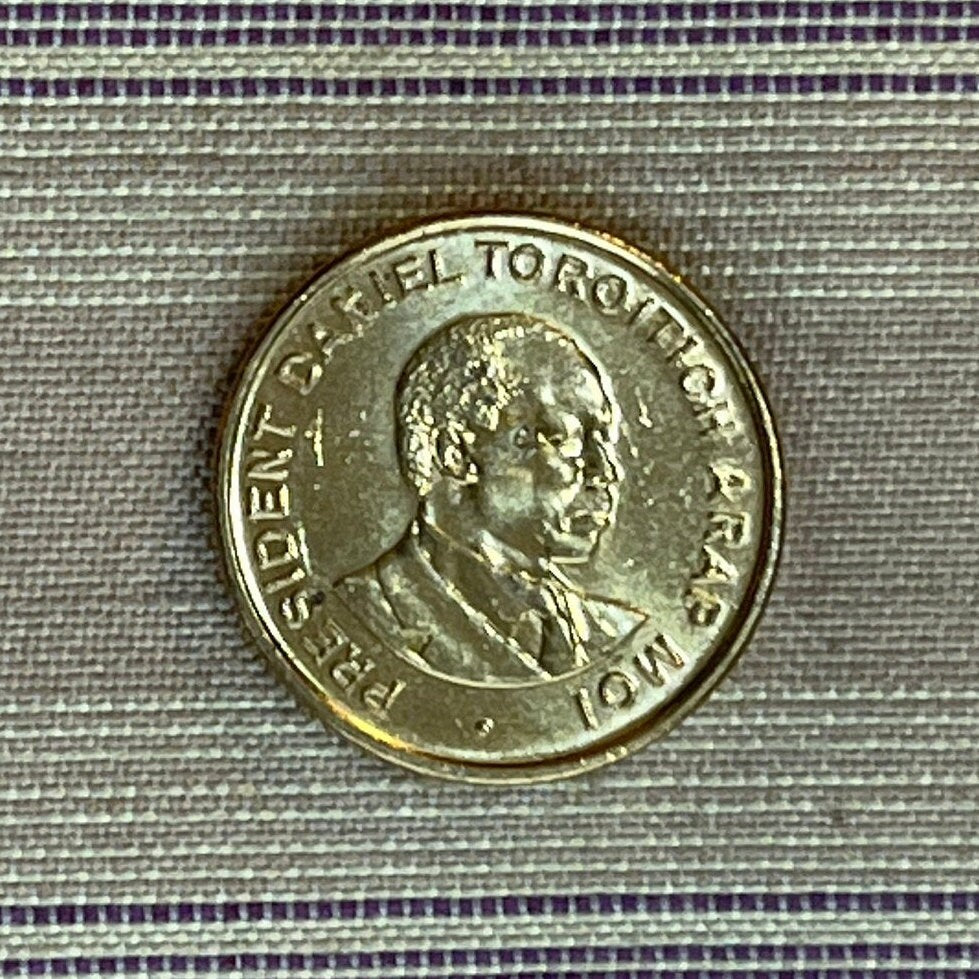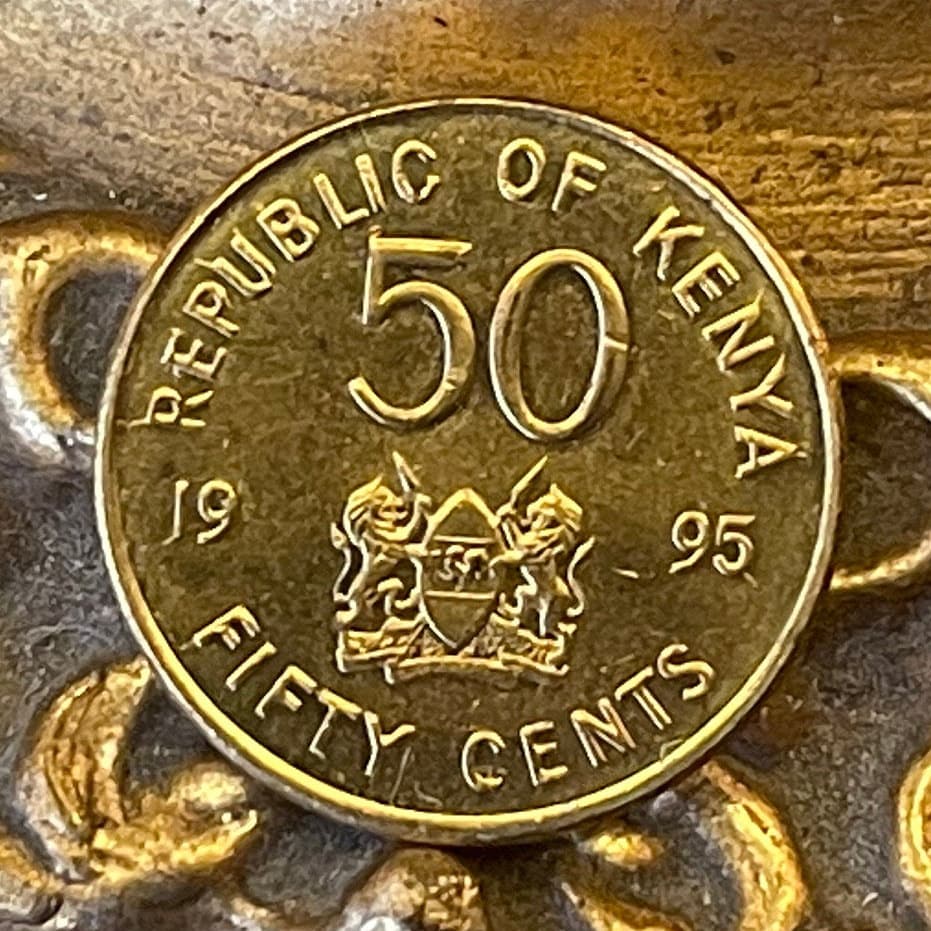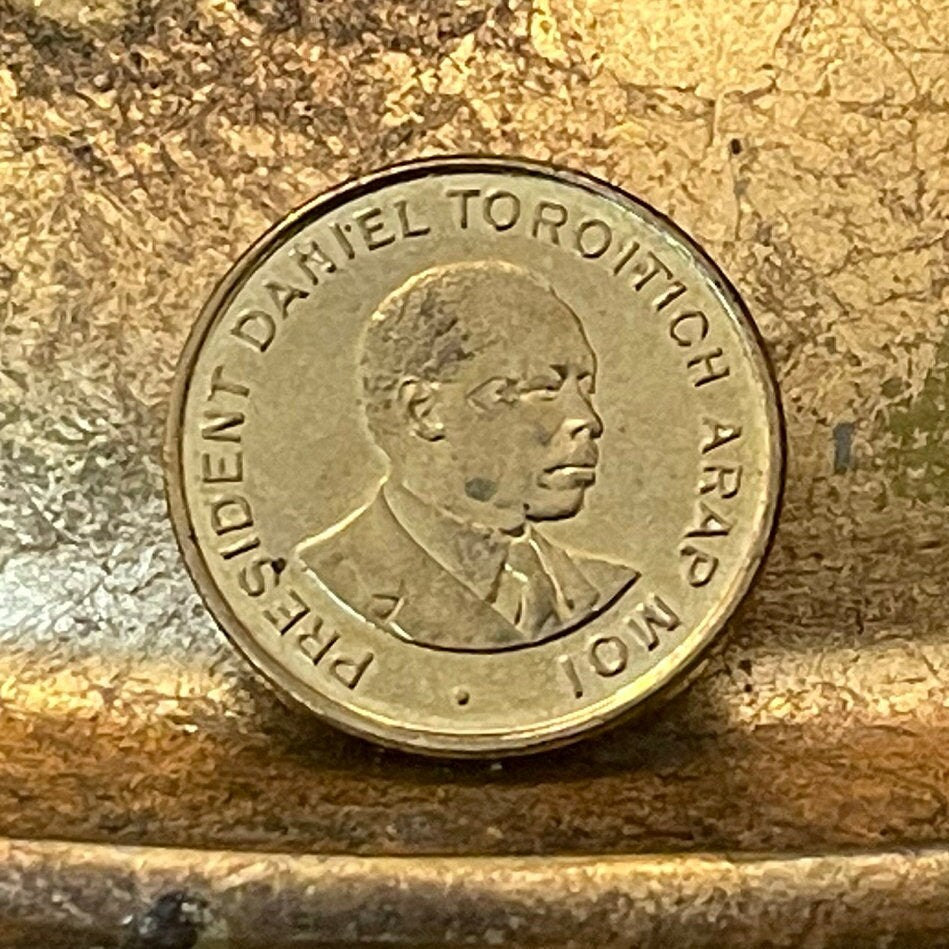elemintalshop
Daniel Arap Moi 50 Cents Kenya Authentic Coin Money for Jewelry and Craft Making (Harambee) (All for One)
Daniel Arap Moi 50 Cents Kenya Authentic Coin Money for Jewelry and Craft Making (Harambee) (All for One)
Couldn't load pickup availability
Daniel Arap Moi 50 Cents Kenya Authentic Coin Money for Jewelry and Craft Making (Harambee) (All for One)
Reverse
Portrait of the second president of Kenya, Daniel Toroitich Arap Moi, facing right
Lettering: PRESIDENT DANIEL TOROITICH ARAP MOI ·
Obverse: Coat of arms of Kenya, denomination, and divided date.
Lettering: REPUBLIC OF KENYA
50
HARAMBEE [on the coat of arms scroll]
FIFTY CENTS
Features
Issuer Kenya
Period Republic (1963-date)
Type Standard circulation coin
Years 1995-1997
Value 50 Cents
0.50 KES = 0.0045 USD
Currency Shilling (1966-date)
Composition Brass plated steel
Weight 3.1 g
Diameter 17.9 mm
Thickness 1.9 mm
Shape Round
Orientation Medal alignment ↑↑
Number N# 5499
References KM# 28, Schön# 30
Wikipedia:
Daniel Toroitich arap Moi (/ˈmoʊiː/ MOH-ee; 2 September 1924 – 4 February 2020) was a Kenyan statesman and politician who was the second and longest-serving President of Kenya from 1978 to 2002. He previously served as the third Vice President of Kenya from 1967 to 1978, and succeeded President Jomo Kenyatta following the latter's death.
Born into the Tugen sub-group of the Kalenjin people in the Kenyan Rift Valley, Moi studied as a boy at the Africa Inland Mission school before training as a teacher at the Tambach teachers training college, working in that profession until 1955. He then entered politics and was elected a member of the Legislative Council for Rift Valley. As independence approached, Moi joined the Kenyan delegation which travelled to London for the Lancaster House Conferences, where the country's first post-independence constitution was drafted. In 1960 he founded the Kenya African Democratic Union (KADU) as a rival party to Kenyatta's Kenya African National Union (KANU). Following independence in 1963 Kenyatta, who became Prime Minister and later President of the new nation, convinced Moi to merge the two parties. Kenyatta appointed Moi to his government in 1964 and then promoted him to Vice-President in 1967. Despite opposition from a Kikuyu elite known as the Kiambu Mafia, Kenyatta groomed Moi as his successor, and he took over as president when Kenyatta died in 1978.
Initially popular both domestically and with Western countries, who saw his regime as countering against influences from the Eastern Bloc-aligned governments of Ethiopia and Tanzania, Moi's popularity fell around 1990 as the economy stagnated and the Cold War ended. Following popular agitation and external pressures, he was forced to allow multiparty elections in 1991; he then led his party, KANU, to victory in the disputed 1992 and 1997 elections. Constitutionally barred from seeking a third term, Moi chose Uhuru Kenyatta as his successor, but Kenyatta was defeated by opposition leader Mwai Kibaki in the 2002 election and Kibaki replaced Moi as president. Kenyatta would eventually win the Presidency in the 2013 election.
Moi's regime was deemed dictatorial and autocratic, especially before 1992 when Kenya was a one-party state. Human rights organisations such as Amnesty International, as well as a special investigation by the United Nations, accused Moi of human rights abuses during his presidency. Inquiries held after the end of his presidency found evidence that Moi and his sons had engaged in significant levels of corruption, including the 1990s Goldenberg scandal. Moi died on 4 February 2020 at the age of 95.
***********
Wikipedia:
The coat of arms of Kenya features two lions, a symbol of protection, holding spears and a traditional East African shield. The shield and spears symbolize unity and defence of freedom.
On the shield is a rooster holding an axe while moving forward, portraying authority, the will to work, success, and the break of a new dawn. It is also the symbol of Kenya African National Union (KANU) party that led the country to independence.
The shield and lions stand on a silhouette of Mount Kenya containing in the foreground examples of Kenya agricultural produce - coffee, pyrethrum, sisal, tea, maize and pineapples.
The coat of arms is supported by a scroll upon which is written the word 'Harambee'. In Swahili, Harambee means "pulling together" or "all for one".
Share
